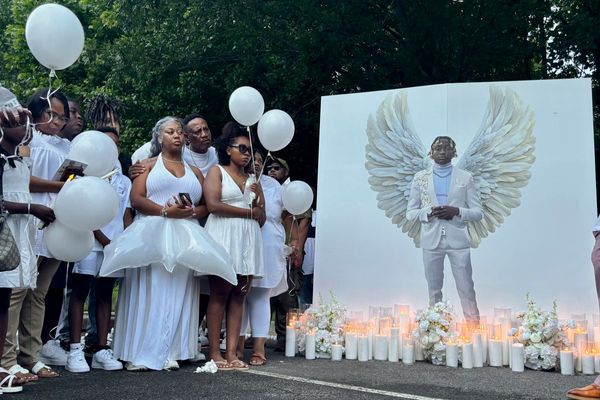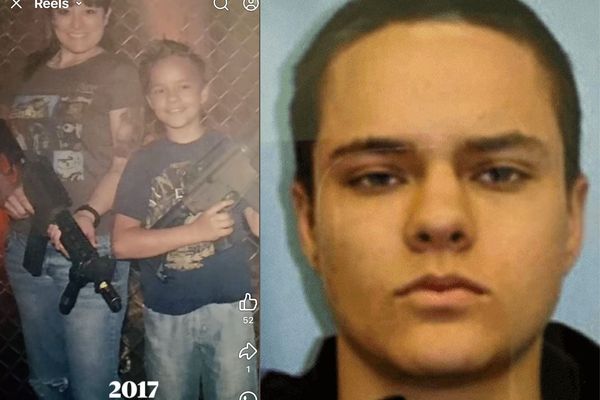In the nascent free India, just out of the throes of colonial rule, the first-ever general elections were marked by Jawaharlal Nehru’s remark, “Naya Hindustan Zindabad.”
During his campaign tour for the Congress Party across the country in 1951, as crowds chanted “Pandit Nehru Zindabad” (long live Pandit Nehru), Mr. Nehru would be quick to urge them to embrace an alternative rallying cry — “Naya Hindustan Zindabad” (glory to the new India), notes historian Ramchandra Guha in his 2002 piece in the World Policy Journal titled “Democracy’s Biggest Gamble.”
India bestowed universal adult franchise, to an eligible electorate of 175 million, more than 80% of them illiterate, spread over an area of more than a million square miles. The task of reaching every last mile, bracing unforgiving terrains, weather, was pushed by one man: Sukumar Sen, the first Chief Election Commissioner of India (CEC).
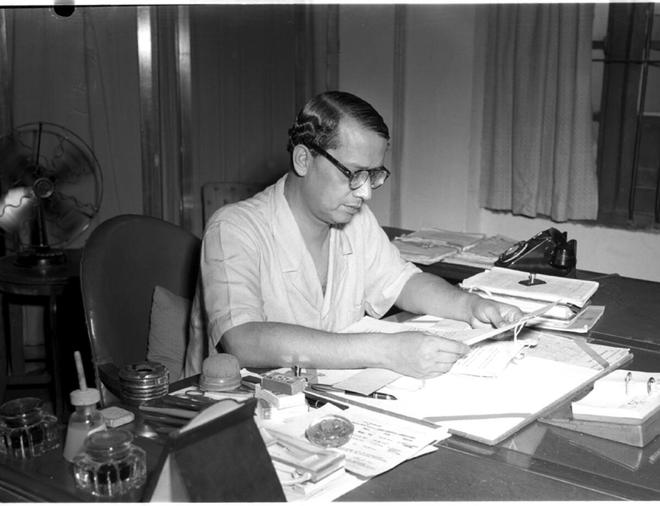
It was the first time one-sixth of the world’s population was casting its franchise to elect its political representatives; notably, just 14% of Indian citizens at the time had ever exercised their franchise; on two occasions (1937 and 1946) the British had facilitated a form of restricted franchise for some central and provincial legislatures under the Government of India Act, 1935.
Preparing electoral rolls for universal adult franchise
Western observers marvelled that a country which had newly attained freedom, witnessed a bloody partition with the migration of 12 million refugees in both directions; and painstakingly undertaken the exercise of bringing together several princely States into a union, was choosing to immediately extend universal adult franchise to its citizens. In the West, suffrage was first restricted to men with property, then workers, and eventually women.
Also read | One Nation, One Election: the Kovind panel’s recommendations
In the CEC’s report of the 1951-52 elections, Mr. Sen noted, “The establishment by the Constitution of the democratic and Parliamentary form of Government in the country on the basis of adult franchise was like the rejoining of a historic thread that had been snapped by alien rule. Franchise on a liberal scale had been common in various parts of ancient India, and by providing for universal adult suffrage, the country boldly achieved the consummation of its electoral aspirations on a national basis.”
While it got independence in August 1947, India remained a dominion until January 1950, when the Constitution was adopted, making it a republic. However, the preparation of electoral rolls began soon after independence; provincial and State governments were asked as early as November 1947 to look into the question and formulate a plan for preparing electoral rolls.
The core of what was to become the Election Commission of India was established in January 1950 and subsequently, Mr. Sen was appointed as the Chief Election Commissioner in March. of that year.
The preliminary publication of rolls took place in stage from November 1950; the last States to publish preliminary electoral rolls were Bihar, Odisha and Punjab— in March 1951. The last rolls, post corrections and addenda, were published in November 1951.
The Parliament first passed the Representation of the People Act, 1950, which provided for the qualifications of voters and matters connected with the preparation and publication of electoral rolls. Next, it passed the Representation of the People Act, 1951, which detailed provisions pertaining to the qualification and disqualification of members from legislatures, election machinery, vote counting, election expenses, and so on.
Two notable instances show how serious the Election Commission was about turning the idea of an adult franchise into reality— its attempts to integrate refugees and women voters.
Under the 1950 Act, a voter had to be residing in India for a minimum of 180 days and be 21 years of age to vote. However, refugees continued arriving in India post Independence owing to the long Partition violence. To include refugees under the franchise, the Secretariat of the Constituent Assembly decided to register all refugees in the electoral rolls “on the mere declaration by them of their intention to reside permanently in the town or village concerned irrespective of the actual period of residence.” This had them covered under the 1950 Act in the absence of a Constitution which would set the date for the country to turn into a Republic.
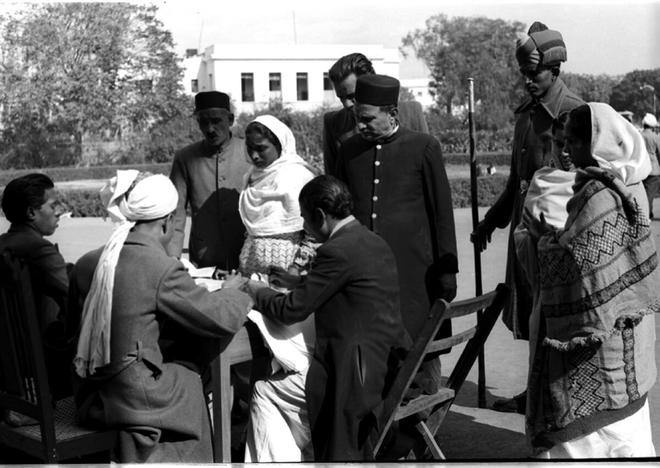
Similarly, the Election Commission issued directions that women were not to register in the electoral rolls as the ‘wife of someone’ or the ‘mother of someone’, and exercise their right to vote in their own name. As several women still registered as a relation of their spouse or children, some 2.8 million women voters had to be finally struck off the list, resulting in a furore. Mr. Sen considered it to be a ‘good thing’, for it would help the prejudice vanish before the next elections, by which time the women could be reinstated under their own names.
Ballots, booths, and indelible ink
A total of 4,500 seats went to polls in the first elections, 489 of these for the Lok Sabha from 401 constituencies and about 4,000 for State legislative assemblies. 2,24,000 polling booths were constructed across constituencies using government and private buildings, and even makeshift arrangements where it was not possible to have concrete structures.
Also read: 1951-52 Lok Sabha polls | When EC invalidated women voters who enrolled as a mother, wife
For such a large-scale election, the scale of logistical planning and procurement of election material was also large. The ECI came up with several innovations, like the use of multiple ballot boxes in each polling station, with one for each party with its symbol marked, so that voters could simply drop their paper in it. As a result, polling booths in the country were equipped with more than two million steel ballot boxes, requiring about 8,200 tonnes of steel.
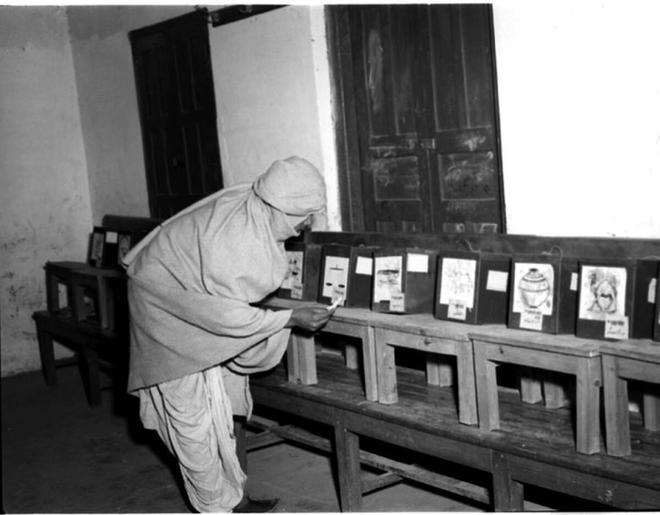
Indelible ink was used to confirm that an individual had voted and also prevent impersonation and double voting. To overcome the Indian public’s reluctance to have their skin marked and to save time, the ECI roped in scientists to better the ink’s drying time. During testing, attempts to rub off the ink proved unsuccessful. The marked finger has over the years become a quintessential sign of the Indian elections, lasting for weeks after Election Day.
New political waves
While the Congress Party was the chief contender, a plethora of political parties representing diverse ideologies, ranging from the Communist Party to the Akhil Bharatiya Hindu Mahasabha, competed during the first election. National party recognition was given to 14 parties, while 53 in total contested the election.
Indian National Congress: Congress’ electoral campaign was led by its firebrand statesman Mr. Nehru after the death of the ailing Sardar Vallabh Bhai Patel in 1949. Mr. Guha notes in his article that, in the space of nine weeks, Mr. Nehru travelled 25,000 miles in all: 18,000 by air, 5,200 by car, 1,600 by train, and even 90 by boat.
In his maiden campaign speech in Ludhiana, Mr. Nehru declared “an all-out war against communalism,” accusing communal bodies of spreading communalism in the name of Hindu and Sikh culture, much like the Muslim League once did. Warning his audience of half a million that such communal bodies would bring ‘ruin and death to the country,’ he asked the electorate to “keep the windows of our mind open and let in fresh breeze from all corners of the world.”
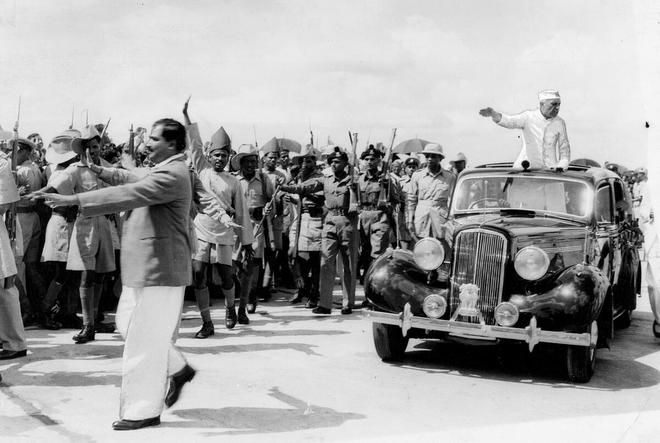
Mr. Guha highlights that Mr. Nehru’s campaign speech across India maintained the same tenor — in Delhi, he affirmed the government’s determination to abolish both untouchability and landlordism and stated that communal forces ‘will be shown no quarter,’ in Bihar, he deplored the ‘monster of casteism,’ in Bombay, he extolled Congress’ foreign policy of principled neutralism.
In Ambala, he asked the women to cast off their purdahs and “come forward to build the country” and also expressed his admiration for the best among his opposition — Ambedkar, Kripalani, and Jayaprakash Narayan. Apart from Mr. Nehru, other prominent Congress leaders included Abul Kalam Azad and Gulzarilal Nanda.
Communist Party of India (CPI): Communist activities had been outlawed by the British, and the CPI operated clandestinely till India gained Independence. Its decision to not to join the Quit India movement had tarnished its image quite badly. Hence, in post Independence India, the party shifted its position from transformation of state power through armed struggle to the defence of parliamentary communism.
Intially, the CPI scorned the Congress-led freedom movement, with its general secretary B.T. Ranadive terming the independence gained in 1947 a “sham,” and called for ousting the Nehru government. However, under the leadership of a new general secretary, Ajoy Ghosh, in 1951, CPI adopted a new programme allowing the party’s entry into parliamentary politics in post-Independence India.
Bharatiya Jan Sangh (BJS): Aiming to consolidate the Hindus —India’s largest religious group — into one solid voting bloc, Syama Prasad Mookerjee (also spelled Mukherjee) established the BJS in collaboration with the RSS after his exit from the Hindu Mahasabha.
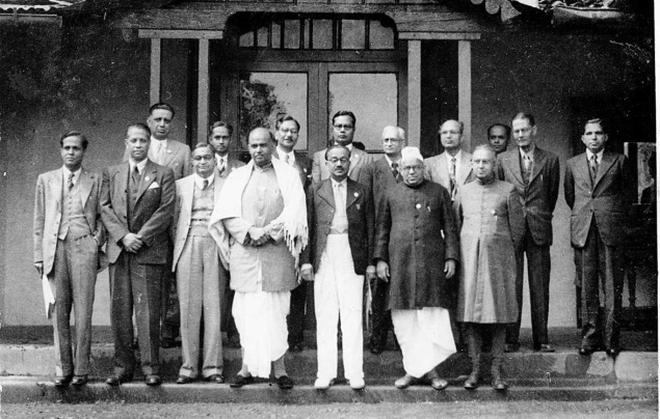
A report in The Hindu describesits inaugural meeting, held in New Delhi on September 21, 1951, in the following manner: the party’s founder Dr. Mookerjee sat along with other leaders, against a white backdrop with pictures of Shivaji, Lord Krishna persuading a remorse-stricken Arjuna to take up arms to fight the Kauravas at Kurukshetra, Rana Pratap Singh and of an earthen deepak [lamp], in saffron. From the pandal hung banners inscribed with ‘Sangh Shakth Kali Yuge’, a dictum taken from the Mahabharata, telling people that in the age of Kali the only force was the Jana Sangh.
By invoking the Mahabharata and Hindu warriors who had fought Muslim invaders, the BJS painted its rivals — be it Pakistan, the Muslims, Jawaharlal Nehru or the Congress Party, as the evil Kauravas. Through the speeches of the Sangh’s leaders, the party clearly supported the ‘Akhand Bharat’ idea — reunification of the motherland through the absorption (or perhaps conquest) of Pakistan. It labelled the Indian Muslims as a problem minority, which had ‘not yet learnt to own this land and its culture and treat them as their first love.’ Its successor BJP has since carried forward its stance, accusing the Congress Party of ‘appeasing’ the Muslims.
Kisan Mazdoor Praja Party (KMPP) and Socialist Party (roots of Janata party): Prominent among the parties of the left were KMPP, headed by Jivatram Bhagwandas ‘Acharya’ Kripalani, and the Socialist Party led by Jayaprakash Narayan, the young hero of the Quit India rebellion of 1942. These parties accused the Congress of betraying its commitment to the poor and claimed to stand for the ideals of the old ‘Gandhian’ Congress, which had placed the interests of workers and peasants before those of landlords and capitalists.
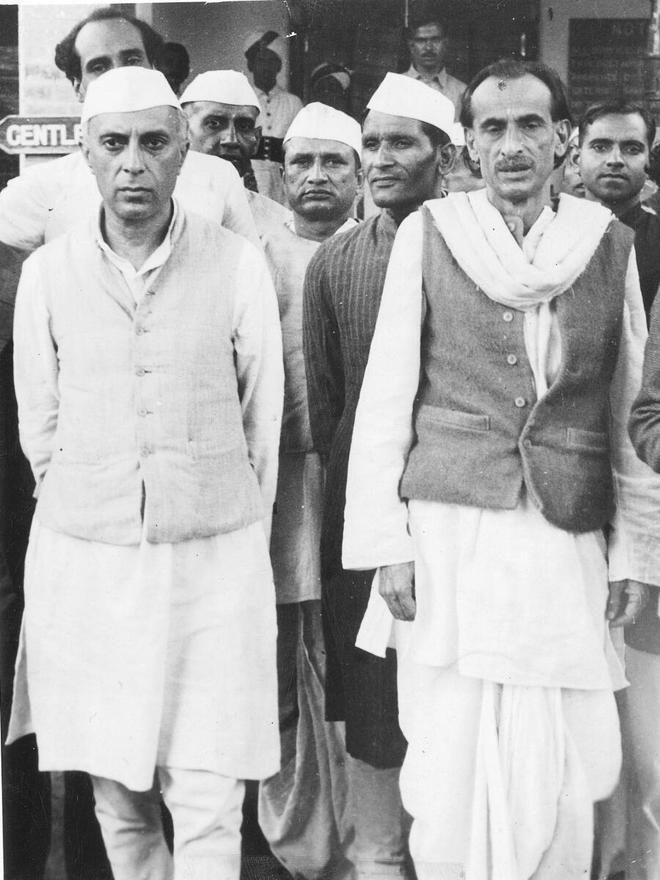
The J.B Kripalani-led KMPP was another Congress breakaway party. Mr. Kripalani, who served as general secretary of the Congress from 1934-1945 and was elected party president in 1946, had several ideological differences with Nehru and most of the Congress’ senior leadership, with the exception of Mahatma Gandhi, and had objected strongly to the partition of the country. After the election, Mr. Kripalani’s KMPP joined hands with the Socialist Party to form the PSP.
The Socialist Party was earlier a left-wing faction within the Congress, and was later formed into a party by Jayaprakash Narayan and Ram Manohar Lohiya. Ideological differences with Mr. Nehru caused the party’s rift with the Congress; however, Mr. Lohiya continued to abide by the Gandhian principle of ahimsa (non-violence) even as Mr. Narayan was an advocate of a more militant approach. The party’s guiding principle was one of decentralised socialism, in which the role of the Union government would be more subdued and local authorities would hold greater economic power.
All India Scheduled Castes’ Federation (SCF): B. R. Ambedkar, the great Dalit lawyer who, as the Union’s law minister, helped draft the Indian Constitution, had resigned from office to revive the Scheduled Castes’ Federation in time for the election. In his speeches he sharply attacked the Congress government for doing little to uplift the lower castes. After freedom was won, said Dr. Ambedkar, the Congress had degenerated into a dharamsala or rest-home, without any unity of purpose or principles, and ‘open to all, fools and knaves, friends and foes, communalists and secularists, reformers and orthodox and capitalists and anti-capitalists.’
India goes to the polls
The actual polling dates were fixed taking into account the state of preparations and the climatic and geographical conditions in various States. The first to vote were the tehsils of Chini and Pangi in Himachal Pradesh, whose residents — a group of Buddhists — voted on 25 October 25, 1951, days before the winter snows shut off their valleys from the rest of the world.
The next State to go to the polls was Bilaspur.
In Travancore-Cochin, Orissa, Madhya Pradesh, Hyderabad and Punjab, polling commenced in December 1951. All the remaining States went to the polls during January 1952. Polling in the northern hilly areas of Uttar Pradesh took place in the second fortnight in February 1952, after snow had melted there.
The highest turnout, 80.5%, was recorded in the parliamentary constituency of Kottayam in Kerala; the lowest, 18%, was in Shahdol in what is present-day Madhya Pradesh. For the country as a whole, about 60% of registered voters exercised their franchise; this, despite the high level of illiteracy.
There was an unexpectedly high turnout in the forest districts of Orissa, where tribals came to the booths with bows and arrows where the highest turnout at a booth was 70%. However, neighbouring booth saw only two panthers and an elephant, resulting in no votes.
India’s financial capital – Bombay — which had over 1349 polling stations, saw a high turnout with nine lakh residents or 70% of the electorate turning up to vote. The workers came in far greater numbers compared to the fashionable middle class, with polling stations in the industrial areas seeing long queues before they opened, despite the particularly cold weather. However, in contrast, at the WIAA Club [in Malabar Hill], which housed two polling stations, it appeared as if people straggled in for a game of tennis or bridge and only incidentally to vote.
The day after Bombay went to the polls, Mizo hills (currently known as Lushai hills) went to polls. Contrasted with Bombay, the Mizo hills, a tribal area bordering East Pakistan and Burma, had only 113 booths across 8000 square miles. About 92,000 tribal villagers reached their booths after walking for days through jungles, camping at night on the way amid song and community dances around the fire.
Poll parties, too, went to great lengths to get each vote cast and counted, even in areas such as Rajasthan, with vast desert areas and no road. For example, in Jalprein and Barmer, high-powered Army vehicles had to be specially arranged to transport the polling parties from place to place.
In Jodhpur and Jaisalmer, a large number of camels had to be hired, and each polling party moved like a caravan. In some hilly areas in Assam, polling parties and porters had to march on foot for days together through trackless forests to reach their polling stations. In the Outer Manipur Parliamentary Constituency, hill chiefs were roped in to offer porters and help in exchange for a piece of red blanket and a gun license.
The winners and losers
The Congress won comfortably, securing 364 out of 489 seats in Parliament and 2,247 out of 3,280 seats in the State assemblies. However, more than 50% of the electorate had voted for non-Congress candidates or parties. For Parliament as a whole, Congress had polled 45% of the vote and won 74.4% of the seats; the corresponding figures for the States were 42.4 % and 68.6 %.
The CPI emerged as the runner-up in India’s first general election. It contested 49 seats in the Lok Sabha polls andwon 16, emerging as the second biggest party after the Congress, although it secured only 3.29% votes.
Trailing the CPI was Jayaprakash Narayan and Ram Manohar Lohiya’s Socialist Party, which secured 12 seats of the 254 it contested. Mr. Kripalani’s KMPP managed to win only nine of the 145 seats it contested. The BJS managed to win three of the 49 seats it contested, with its founder Dr. Mookerjee himself winning from the Calcutta South East constituency. Dr. Ambedkar’s SCF didn’t see much success in the 1952 election, securing only two of the 35 seats it contested.
The Congress also tasted defeat in certain quarters, with as twenty eight Union ministers failingto win a seat, including Morarji Desai. . Strikingly, it was a communist, Ravi Narayan Reddy who received the largest majority, larger even than Jawaharlal Nehru.One of the more notable defeats was that of B. R. Ambedkar by Congress candidate Narayan Sadoba Kajrolkar, who was once his subordinate. Later, however, Dr. Ambedkar became a member of the Rajya Sabha. But when he tried to get elected to the Lok Sabha again in the 1954 bypolls in Bhandara, he was defeated by another Congress candidate.
With Congress winning absolute majority, Mr. Nehru headed his second cabinet comprising of only Congress members. Holding hefty portfolios like Defence and Foreign Affairs, Mr. Nehru also inducted several members from his first cabinet — Kailash Nath Katju, Rafi Ahmed Kidwai, C. D. Deshmukh, N. Gopalaswami Ayyangar, Amrit Kaur and Satya Narayan Sinha.
(Inputs from The Hindu Archives)



